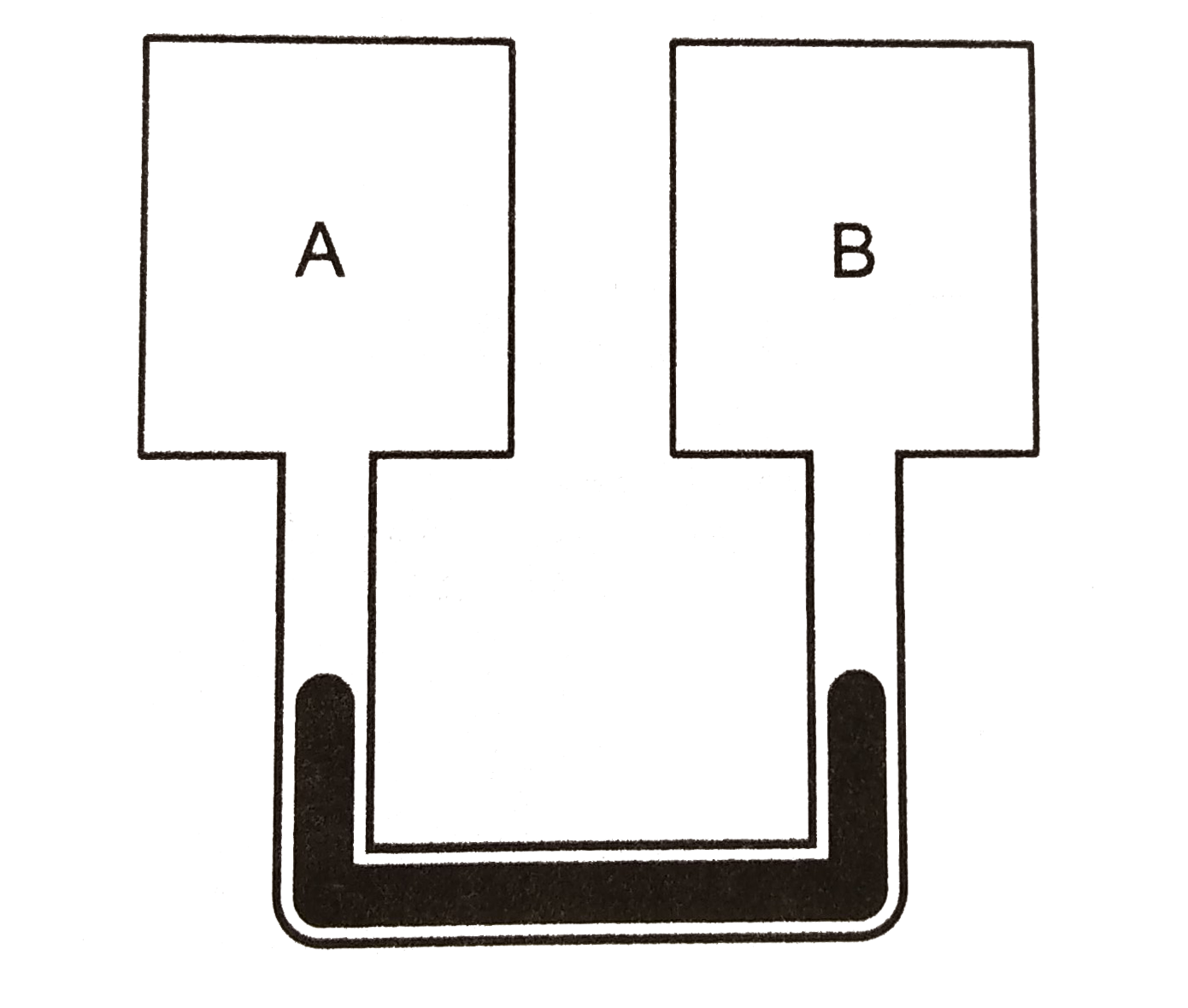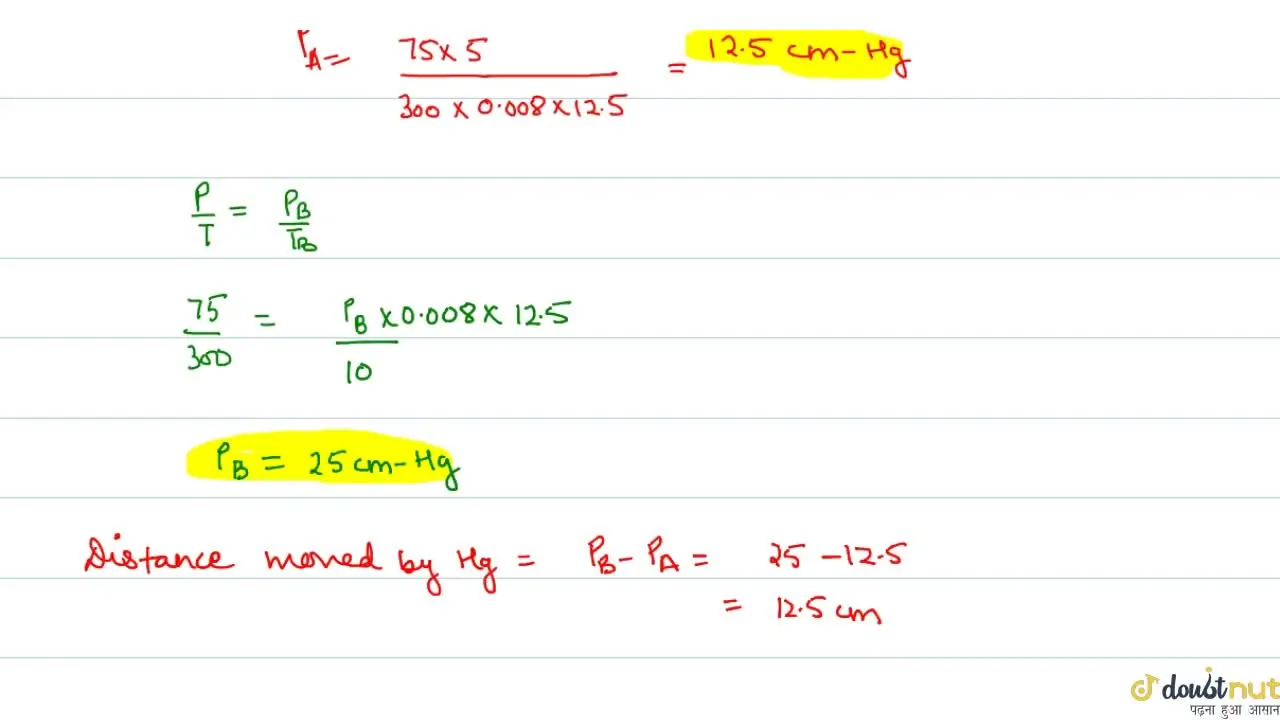Figure shows two rigid vessels A and B, each of volume 200cm3 containg an ideal gas (Cv=12.5JK−1mol−1). The vessels are connected to a manometer tube containing mercury. The pressure in both the vessels is 75 cm mercury and the temperature is 300k. (a) (5−0J) of heat is supplied to the gas in the vessels.(b) (10J) to the gas in the vessels B. Assuming no appreciable transfer of heat from A to B calculate the dufference in the heights of mercury in the two sides of the manometer. Gas constant (R=8.3JK−1mol−1)

V=200cm3,Cv=12.5J/mol−K,
T=300K,P=75cm.
(a) No. of moles of gases in each vessels,
n=PVRT
=75×13.6×980×2008.3×107×300
=0.008
(b) Heat is supplied to the gas but dV=0
So, dQ=dU
implies 5=nCvdT
implies 5=0.008×12.5×dT
implies dT=50 for (A)
Since PT=PATA
implies 75300=PA0.008×12.55
=12.5 cm of Hg
again PT=PBTB (For container B)
implies 75300=PB0.008×12.510
PB=25 cm of Hg.
Mercury moves by a distance
PB−PA=25−12.5=12.5 cm.
Related Playlists
Similar Questions
Two vessels of the same volume contain the same gas at same temperature. If the pressure in the vessels is in the ratio of 1 : 2, then
View SolutionA closed vessel contains some gas at a given temperature and pressure. If the vessel is given a very high velocity, then the temperature of the gas
View SolutionThere are 4×1024 gas molecules in a vessle at 50K temperature. The pressure of the gas in the vessel is 0.03atm. Calculate the volume of the vessel.
View SolutionA vessel is filled with a gas at a pressure of 76 cm of mercury at a certain temperature. The mass of the gas is increased by 50% by introducing more gas in the vessel at the same temperature. Find the resultant pressure of the gas.
View SolutionA vessel is filled with a gas at a pressure of 76 cm of mercury at a certain temperature. The mass of the gas is increased by 50% by introducing more gas in the vessel at the same temperature. Find the resultant pressure of the gas.
View SolutionA rigid vessel of volume 0.50m3 containing H2 at 20.5∘C and a pressure of 611×103 Pa is connected to a second rigid vessel of volume 0.75m3 containing Ar at 31.2∘C at a pressure of 433×103 Pa. A value separating the two vessels is opened and both are cooled to a temperature of 14.5∘C. What is the final pressure in the vessels?
View SolutionThe gas in a vessel is subjected to a pressure of 20 atmosphere at a temperature 27∘C. The pressure of the gas in the vessel after one half of the gas is released from the vessel and the temperature of the remainder is raised by 50∘C is
View SolutionA gas is filled in a vessel at a certain temperature and at a pressure of 80cm of Hg. At the same temperature, more gas is filled in the vessel so that its mean increases by 60%. Determine the resultant in the vessel.
View SolutionA vessel containing 9 litres of an ideal gas at 760mm pressure is connected to an evacuated 9 litre vessel. The resultant pressure is
View SolutionTwo closed vessels of equal volune contain air at 105kPa, 300K and are connected through a narrow tube. If one of the vessels is mow maintained at 300K and the other at 400K, what will be the pressure in the vessels?
View Solution


